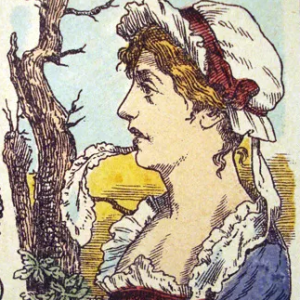Puzzles are a fantastic way to exercise our brains, improve our problem-solving skills, and keep our minds sharp. One puzzle that has intrigued many is the “What Is Missing?” puzzle. This seemingly simple challenge requires us to think outside the box and consider different perspectives. In this article, we will analyze the puzzle, explore possible solutions, and ultimately reveal the correct answer. Dive in to discover the valuable lessons this puzzle teaches about observation and critical thinking.

The Puzzle
The puzzle presents an image featuring a simple diagram with a question: “What is missing?” The diagram shows a horizontal line intersected by three vertical lines. Above the horizontal line are the numbers 1, 3, and 5, while below the line are the numbers 2 and 4. A key piece of information is that the answer is explicitly stated not to be 6.
Analyzing the Puzzle
To solve this puzzle, we need to carefully examine the given numbers and the structure of the diagram. Here are some critical observations:
- Number Sequence: The numbers above the line are 1, 3, and 5, which are odd numbers. Below the line, we see the even numbers 2 and 4.
- Positioning: The numbers are arranged in a specific sequence, suggesting there might be a pattern to follow.
- Context Clue: The statement “ANSWER IS NOT 6” is crucial. It suggests that the solution is not simply finding the next numerical value in the sequence.
Exploring Possible Solutions
Given the pattern of odd and even numbers, one might initially think that the missing number should logically fit into this sequence. However, the clue that the answer is not 6 encourages us to look beyond a straightforward numerical answer.
The Solution
After carefully considering the layout, it becomes clear that the puzzle is not just about identifying the next number. The arrangement of numbers and lines resembles the layout of a manual transmission gear stick in a car. In manual transmission vehicles, the gears are typically arranged in a specific pattern, with one gear often represented by the letter “R” for reverse.
The correct answer to the puzzle is “R” for reverse gear. The puzzle cleverly uses the layout of a manual transmission to test our observation skills and ability to think creatively.
Broader Lessons from the Puzzle

This puzzle offers several valuable lessons in problem-solving and critical thinking:
- Attention to Detail: The puzzle teaches us the importance of paying attention to details. Sometimes, the most apparent answer is not the correct one, and careful observation can lead us to the true solution.
- Thinking Outside the Box: Puzzles often require creative thinking. In this case, the answer was not a number, as one might initially expect, but a letter representing a gear shift. This challenge encourages us to consider different perspectives when approaching a problem.
- Context Matters: Understanding the context of a problem can provide vital clues to the solution. Recognizing the diagram as a representation of a manual transmission was key to solving this puzzle.
Why Puzzles Like This Matter
Engaging with puzzles like the “What Is Missing?” challenge is more than just a fun pastime. These brain teasers help develop our cognitive abilities, sharpen our focus, and enhance our critical thinking skills. By regularly challenging our minds with puzzles, we train ourselves to think more creatively and approach problems from various angles, which is beneficial in all aspects of life.
Applying the Lessons Learned
The lessons learned from solving this puzzle can be applied to various situations, whether in daily life or complex problem-solving scenarios. By cultivating an attention to detail, embracing creative thinking, and always considering the broader context, we can approach challenges with a more open and flexible mindset, leading to more effective solutions.
Conclusion
The “What Is Missing?” puzzle is an excellent example of how puzzles can challenge our minds and enhance our problem-solving skills. By carefully analyzing the diagram and considering the context, we can arrive at the correct solution—revealing that the missing element is not a number but the letter “R” for reverse. This puzzle serves as a reminder that the answers to problems are not always what we expect and that thinking outside the box is essential for finding the correct solution.


